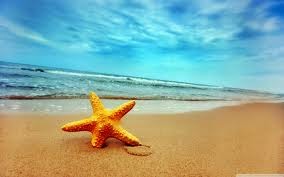Kiel, Germany: The Wedge Maritime Port
Kiel is a the capital of the Schleswig-Holstein German province, near the northern border with Denmark. Today, this is an important maritime port and cruise ship stopover towards the Baltic region, Scandinavia and the rest of Europe. However, aside from being a booming shopping district as it is today, Kiel has a colorful maritime past that reflected the history and culture of the German nation. Interestingly, the city's name was derived from the word describing the shape of the port of Kiel. These are something hidden by the streets and modern commercial establishments in the city.
Before, Kiel is considered a unique city being ruled by a Danish King, but under the former German confederation. It was during this time that Denmark and Germany have made an cooperative agreement in ruling their dominions. It was until a war broke between the two countries that transferred the power from the Danish king to Germany, with the aid of Austria. Germany completely took over the area during the reign of the Kingdom of Prussia when it won a battle between its former ally Austria. Moreover, during the two World Wars, the city has become an important naval port, which the Allied Powers have seen it is necessary to bomb and destroy the city. It was only after the Second World War that Kiel was reconstructed after almost over three-fourths of the city was completely destroyed.
Now, there are few standing historic structures in the city, and these are the places which is the focus of this blog post. Since a boat from Oslo to Kiel would pass through several places in the journey in Norway, Denmark and Germany, some description of these places are included here.
1.
Oslofjord
The Oslofjord is a long narrow inlet
with steep cliffs created through the process of glacial erosion connecting the
Norwegian capital Oslo to Skagerrak strait dividing Denmark and Norway. The
narrowest point is the Drøbak sound, which was crucial in the German invasion
during the Second World War.
2.
Kiel Hbf
The central station of Kiel was built in
the late 18th century, as part of the imperial war harbors. This station
connects to the other north German cities. This was destroyed in Second World
War by Allied forces.
3.
Holstenplatz
This is a square along one of the oldest
road in the city. This was formerly connected to the highway to Denmark, being
part of the Danish Kingdom before it was transferred to German after a war.
4.
Asmus-Bremer Platz
This square is named after Asmus Bremer,
the former city mayor who was well-known to have served among the people. He
used to sit with the people to know their concerns in his reign as mayor.
5.
St. Nikolai Kirche
This is the oldest surviving Church in
the city. This is a Lutheran church with a Neo Gothic architecture. The city
was badly damaged during the Second World War.
6.
Schoßgarten
The Kiel castle gardens was once a
magnificent baroque garden. The garden was the place for eventful periods of
care and neglect.
7.
Ratsdienergarten
This is a garden located near Kleiner
Kiel, which is made for blind people, such that railings and sign posts in
Braille. The park was a place of a monument, reminding the sailor’s revolution,
which caused the downfall of the Kingdom of Prussia that used to hold the city
after Denmark lost the war with Germany.
8.
Kleiner Kiel
The Small Kiel is a shallow inland
waters, which is dissected by a bridge in two parts. The Kiel historic quarter
is surrounded by the water connecting the inland water to the fjord.
9.
Hiroshimapark
The Hiroshima Park is a green area,
which lies between the town hall and the Small Kiel. This is a commemoration of
the atomic bombing in Hiroshima.
10. Theater Kiel
The theatre company in Kiel, which is
jointly funded by the city and the state. The company produces opera, musicals,
ballet, plays and theatre for youth and children.
11. Kiel-Rathaus
The Kiel City Hall is the landmark of
the city of Kiel. The tower of the city hall resembles that of St. Mark’s
Basilica in Venice, Italy.
12. Europlatz
Here is a commercial square full of
hotels, restaurants and other business establishments. This is in front of the
Sparkassen Arena.
13. Sparkassen-Arena Kiel
This is an indoor area in Kiel and home
of the THW Kiel, a handball team. This was formerly named Ostseehalle, which
was initiated in the fifties.
14. Kaistraße
This is the street along the port of
Kiel. Ships docking going to Sweden, Norway and the rest of Europe. This
provides a good view of the whole city, when seen from the ship itself.
15. Storebæltsbroen
The Great Belt is a bridge over a strait
between the Danish major islands Zealand and Funen. It is the most important of
the three Danish straits, where ships could pass under it. Historically, it was
said that a glacial river existed before, which has expanded into a strait
known today.
Personally, I think the boat from Oslo to Kiel may provide a good alternative for me to explore North Germany or Denmark in the future. I would love to learn more about German cities. In fact, in my travel list, there are more than ten German cities on it. So, this is something I look forward to in the future. Perhaps, it could help me learn the German language and appreciate the German culture.


































Comments
Post a Comment